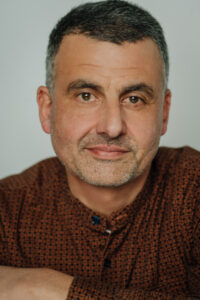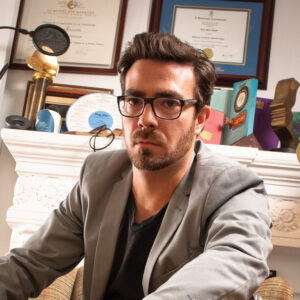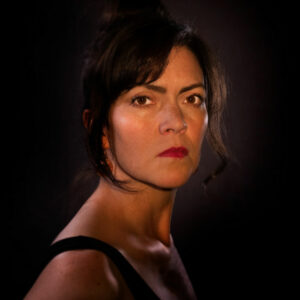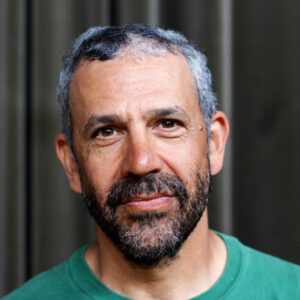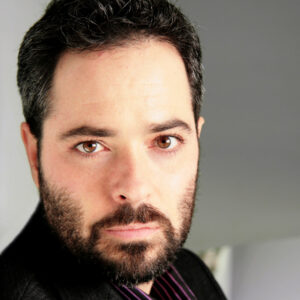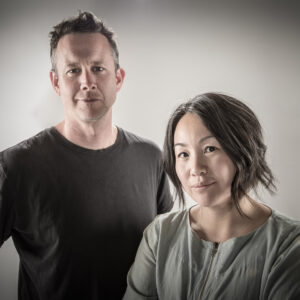Sonoyo Nishikawa
Laureate, 2024
Image: Name, Title, Description
01

Biography
Sonoyo Nishikawa, a lighting designer originally from Japan, studied in London under Japan’s Ministry of Education and Culture. Sonoyo has worked on major productions with Robert Lepage, including A Midsummer Night’s Dream and Les Sept Branches de la Rivière Ota, for which she won a Dora Mavor Moore Award. Her innovative designs have earned her numerous accolades, such as the Prix des meilleurs éclairages and the Prix Jaques-Pelletier. Recent projects include Les Sept Branches de la Rivière Ota at the National Theatre in London, Once Upon A One More Time at the Shakespeare Theatre Company in Washington, and Sexual Misconduct of the Middle Classes at Centaur Theatre.
2024 Protégé
Mayumi Ide-Bergeron
Acceptance Speech
Thank you so much. I’m truly honoured and moved by this recognition.
First, I want to congratulate my fellow nominees—Itai, Debashis, and The Old Trout Puppet Workshop. It’s incredibly reassuring to be in such a nice company, who share this journey. I’m grateful to be part of this group.
I also want to express my sincere thanks to everyone involved with the Simonovitch Award. The support I’ve received over the past months has been heartfelt and truly appreciated. To the jury who selected me, thank you. I am deeply honoured and humbled to receive this award.
A special thanks to Anick Labissonniere, the 2015 winner, for nominated me. I’m also grateful to Eo Sharp for her motivation and to Marie Brassard, the 2022 winner, who has been a constant presence in my career since my early days in Canada. Working alongside these incredible women, who have always been leading the modern theatre, has been a blessing. I will always cherish their influence.
I was born to a movie-fan father and a theatre-loving mother, so my passion for theatre can definitely say that my family has had a significant influence on my journey. So, I want to thank my parents and family for their unwavering support.
I realize it’s not easy to explain for everyone here tonight to understand what a lighting designer does. Some people still think I simply turn wall switches on and off or spin colour wheels.
Lighting design is still a modern field compared to the history of theatre since ancient Greece. It may take generations before a little girl dreams of becoming a lighting designer, but we are living in an era where change happens quickly. The future is unpredictable, and I believe we should be optimistic about it.
Lighting design is a unique paintbrush to transcend any categories of theatre arts. It brings life and connections between various fields to the scene, but unlike painting, it cannot finished by me alone. Without technicians, I wouldn’t be exist. So I thank all the lighting technicians who have supported me along the way, especially my assistants—Julie in Montreal and Karen in New York. Your patience and dedication have been invaluable.
In Theatre, it’s essential to have a solid technical foundation in whatever field you work in, as that is the root from which the art will bloom. I was fortunate to build that foundation in Japan, where lighting designers are so called as artistic engineers. I am proud of this title, as it reflects the technical expertise required to bring theatre arts to life.
The field of theatrical lighting design is closely tied to advancements in computer and optical technologies, and it is impossible to separate the two. If we were to compare the lighting technology fifty years ago with that of today, it would feel as though we were witnessing the entire history from the Stone Age to modern times. And I have always been in the middle of this evolutionary melting pot.
This evolution has made it easy to achieve things that once required a tremendous amount of effort to express. Of course, cutting-edge tools will continue to inspire us. However, as a theatre creator, I believe that the essence of what we must never forget is that the power of the audience’s spirits of imagination and sensitivity are essential to brings universal life to the artificial space of the theatre.
During my time in London, I met the director Robert Lepage, which is what brought me to Canada. I was excited about the chance to collaborate with him, but I soon realized how difficult it would be. His creative process was largely improvisational, there were no scripts, and his rehearsal space was an old disco with a low ceiling and no lighting. Having been trained in the organized theatre world in Japan, this was a whole new world for me.
I often found myself questioning, “Why me?” But in the middle of that confusion, master lighting designer David Hersey offered me some advice: “Sonoyo, new stars always born from chaos.”
Then after three years of struggle, the result was The Seven Streams of the River Ota, a seven-hour theatrical epic was born. Even 25 years later, it continues to be performed around the world. It’s a monumental production in theatre history, and I’m proud to have been a part of it. Robert continues to inspire many artists, which I think is proof of his genius. I’m forever grateful for the opportunity he gave me.
Now, more than 30 years later and having been involved in countless productions, I would like to express my sincere gratitude to the Canadian theatre community for welcoming me. As someone whose first language is neither French nor English, I was deeply moved by your generosity.
Creation in the theatre is always the result of a collaborative effort. A great production is never the product of excellent lighting design alone. The works that truly resonate with the audience are those in which each of us dedicates our entire being to our area of expertise yet knows when to let go and not attach to what we wholly wanted.
This is because the magic of the theatre is born in the moment when the boundaries between the script, set design, costumes, choreography, direction, acting, music, and lighting blend so seamlessly that it becomes impossible to separate them. It is in these moments that the audience can feel the profound depths of the story beyond what they see with their eyes.
Today, as I am honoured, I also feel that I am honouring everyone involved in theatre arts, all those who have dedicated their lives to this craft. To all of you, my heartfelt congratulations.
Thank you for listening.
02
03
The Artist's Eye
Subscribe today to the monthly e-newsletter.
> Be the first to know about current artistic projects of the Siminovitch Prize community.
> Learn about emerging artists who are shaping the future of Canadian theatre.
> Stay informed about upcoming opportunities and calls for nominations.
















